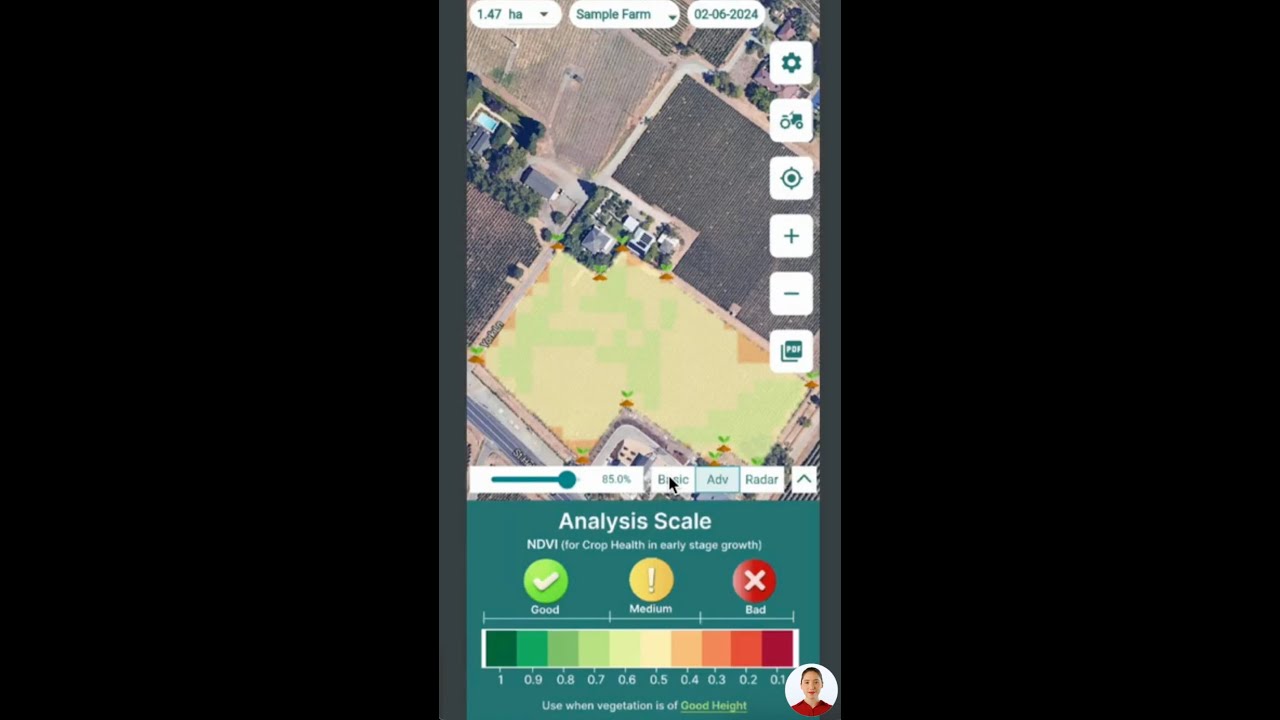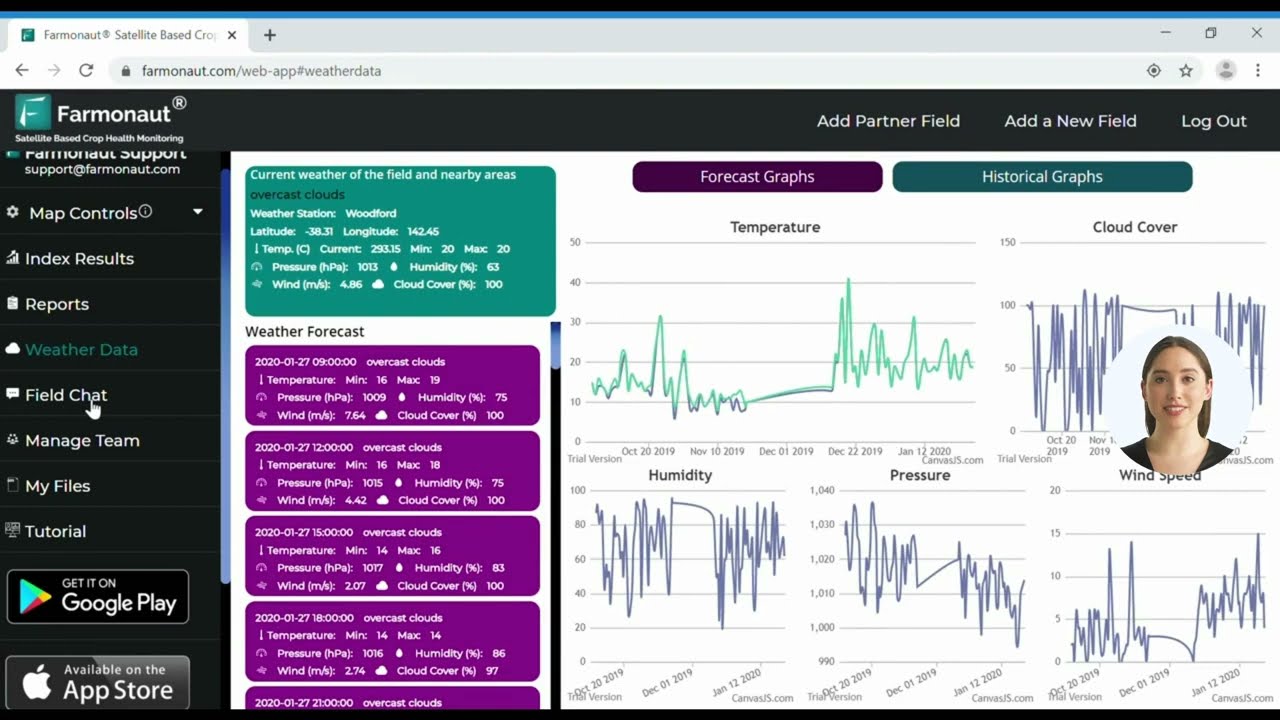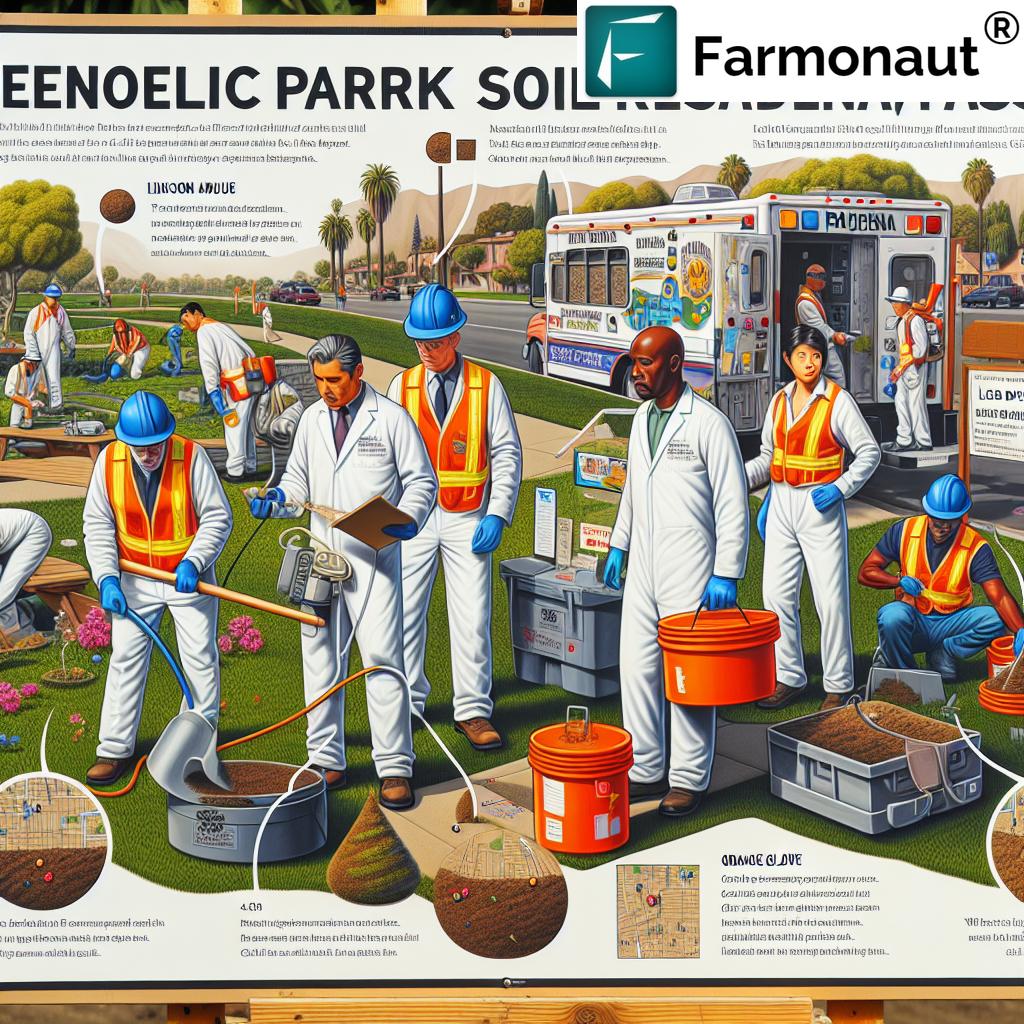Soil Testing in Pasadena Parks: 5 Urgent Facts on Lead Risks
“Pasadena park soil tests revealed lead levels up to 4 times higher than EPA safety limits in some areas.”
1. Five Urgent Facts About Lead Risks: Soil Testing in Pasadena Parks
Soil testing in Pasadena parks is more than a local concern—it’s a crucial public health initiative impacting residents, families, and youth athletes across Pasadena and Los Angeles County. Recent events, particularly after the Eaton Fire, have revealed disturbing lead levels in Pasadena soil. Infields at Washington Park and Victory Park are currently closed, as soil sampling found lead levels above 80 parts per million in some areas. While cleanup thresholds were not reached, these findings require urgent evaluation, ongoing monitoring, and, where necessary, targeted remediation.
Let’s break down the five most urgent facts everyone in Pasadena, Los Angeles County, and neighborhoods along Washington Boulevard, North Altadena Drive, Lincoln Avenue, Orange Grove Boulevard, and Eaton Drive needs to know:
- Lead is widespread in public park soil—even in open, recreational areas. Any area with exposed soil, especially infields, baseball diamonds, soccer fields, and track or football fields, must be evaluated for heavy metals contamination.
- Los Angeles County soil sampling has shown that soil lead levels can exceed the EPA’s safety limit of 40 mg/kg (ppm) for play areas, with Pasadena park soil sometimes measuring more than 80 ppm, and worst patches reaching four times the EPA safe limit.
- Health risks of heavy metals in soil are especially serious for children, who are more susceptible to the toxic effects of lead, as well as for the broader community.
- Neighborhood soil evaluation in Pasadena is ongoing, with exposed infields in key parks closed off and residents redirected to turf fields for safety until further testing and possible remediation are completed.
- Public park soil remediation is a community-wide necessity. Timely action is needed not just in the highlighted areas but in parks, schools, community centers, and sports fields citywide, especially after environmental disasters like wildfires, which exacerbate contamination risks.
Soil contamination in Los Angeles County is not isolated to a particular street, avenue, or boulevard. In Pasadena, neighborhood soil evaluation and ongoing public park soil remediation are essential for community health, sustainability, and environmental protection.
2. Why Soil Testing in Pasadena Parks is Critical for Public Health
Regular soil testing in Pasadena parks is not just a bureaucratic procedure; it’s a science-based approach to protect our children and our environment. The recent findings from Los Angeles County soil sampling after the Eaton Fire are a stark reminder that urban parks, recreational fields, and open spaces face ongoing threats from heavy metals.
Let’s look at what prompted the urgent evaluation and closures:
- Washington Park Infields and Victory Park Infields: Both closed after elevated lead levels (over 80 ppm) were discovered.
-
Two Key Neighborhoods (as announced by Pasadena officials):
- Bounded by Lincoln Avenue, Washington Boulevard, North Altadena Drive, and the city limit
- Bounded by North Altadena Drive, Orange Grove Boulevard, Washington Boulevard, and Eaton Drive
Soil in these areas is under urgent review, and parks with exposed soil are being evaluated for safety.
If you have children, you may already know how quickly they come into contact with bare soil—at playgrounds, baseball diamonds, and parks throughout Pasadena and Los Angeles County. Given ongoing concerns, the city strongly encourages heavy metals tests and professional evaluation at all sports fields and youth play areas within these neighborhoods. Early and regular soil evaluation is the first line of defense against potential health risks.
“Over 30% of Los Angeles County neighborhoods face elevated heavy metal risks, impacting community health and sustainability.”
3. Lead Levels in Pasadena Soil: What the Los Angeles County Soil Sampling Reveals
The Los Angeles County soil sampling effort in Pasadena has focused attention on the frequency and distribution of dangerous lead levels in soil—especially at parks, baseball fields, and recreational spaces most frequented by children. Here are the key locations and findings driving new policies in soil testing:
- Washington Park and Victory Park: Detected lead levels over 80 ppm, above the CDC’s recommended “safe” guideline of 40 ppm for play areas.
-
Neighborhoods affected:
- Lincoln Avenue, Washington Boulevard, North Altadena Drive, and the city limit
- North Altadena Drive, Orange Grove Boulevard, Washington Boulevard, and Eaton Drive
- Robinson Park, Hamilton Park, and Alice’s Dog Park are outside the immediately identified neighborhoods and remain open, but with precautionary soil sampling and monitoring planned.
It’s critical to remember that lead “parts per million in soil” doesn’t always require direct remediation (EPA’s cleanup trigger: 400 ppm in play areas, 1200 ppm in non-play areas), but any elevation calls for ongoing evaluation, monitoring, and protective measures.
- Residents and sports participants are being redirected to turf and artificial fields where possible.
- Park closures due to soil contamination underscore the importance of sports field soil safety and swift, science-based action.
What Triggers Soil Contamination in Los Angeles County Parks?
Across Pasadena and the broader Los Angeles County, soil can become contaminated through several avenues:
- Historical use of leaded gasoline and industrial activity
- Atmospheric deposition from past emissions or nearby traffic corridors (Lincoln Avenue, Washington Boulevard, Orange Grove Boulevard)
- Aftermath of wildfires like the Eaton Fire, which can re-mobilize heavy metals previously sequestered in vegetation or topsoil
These overlapping sources necessitate a multi-tiered approach to soil safety, combining regular residential, neighborhood, and city-run park soil tests.
Why “Parts Per Million” Matters in Park Soil Safety
The metric “parts per million” (ppm) in soil is the standard for determining safe versus hazardous contamination levels. For lead, the risk increases with prolonged exposure above 40 ppm (the CDC recommendations for play areas), with more severe risks above 400 ppm.
However, even low-level chronic exposure—especially through soil dust that can be ingested or inhaled by children—poses neurological and developmental risks.
4. Health Risks of Heavy Metals in Soil: The Community Impact
Consistent soil evaluation and remediation in public parks are vital due to the severe and long-lasting health effects of lead exposure, especially on children, pregnant women, and those with compromised immune systems.
- Children’s Health Risks: Lowered IQ, learning disabilities, attention deficits, behavioral issues.
- Adults’ Health Risks: Increased blood pressure, reproductive problems, kidney and nervous system damage.
- General Population Risks (from ongoing exposure): Community-wide impacts through accumulation in the food chain and contamination of home gardens.
Areas most at risk often include infields, playgrounds, and bare soil patches where residents engage in baseball, soccer, football, or athletics—precisely the fields and parks under urgent review in Pasadena.
What Other Heavy Metals Are Monitored?
Apart from lead, the soil sampling in Pasadena parks may check for:
- Cadmium
- Arsenic
- Mercury
- Chromium
However, lead remains the most prevalent and concerning contaminant in public park settings.
By prioritizing sports field soil safety, Pasadena is setting a model for other Los Angeles County neighborhoods.
Protecting Our Most Vulnerable: Parks, Infields, and Sports Fields
- Young athletes in baseball diamonds, soccer fields, and football/track zones often experience the greatest exposure due to frequent contact with bare or dusty soil.
- By closing contaminated fields, redirecting teams to turf, and funding further testing, Pasadena is reducing these risks—demonstrating sustainability and community responsibility.
5. Park Closures Due to Soil Contamination and Remediation Steps
Public trust in our parks and recreational fields depends on quick, transparent, and effective action when contamination is found. Pasadena’s response aligns with best practices for public park soil remediation and sports field soil safety.
- Immediate Park Closures: Infields at Washington Park and Victory Park are closed to public use while further testing is conducted.
- Redirection to Turf Fields: Residents and youth sports groups are being redirected to safer, artificial turf fields while remediation or evaluation is underway.
- Precautionary Evaluation: Outside the high-risk neighborhoods (Robinson Park, Hamilton Park, Alice’s Dog Park), open status remains, though exposed soil will be sampled as a precaution.
- Comprehensive Soil Testing Required: The City of Pasadena strongly encourages soil testing at all parks and sports areas with exposed soil, not limited to the two highlighted neighborhoods. All areas must be closed to public use until heavy metals testing is complete.
- Ongoing Communication and Transparency: Results of ongoing soil sampling and evaluation will be shared with the public to ensure trust and rapid response as needed.
Regular, data-driven monitoring is key to environmental justice and health for every neighborhood in Pasadena and beyond.
For government bodies, agribusinesses, or local communities seeking scalable, real-time monitoring, Farmonaut’s large-scale farm management solutions provide the right balance of satellite-based data and actionable insights—supporting early detection and rapid response to contamination threats in public or private spaces.
6. Comparative Risk Table on Lead Levels in Pasadena Parks Soil
Below, we present a comparative table outlining estimated lead levels by park, juxtaposed with EPA safety thresholds. This summary serves as a resource for residents, policymakers, and field managers in Pasadena and Los Angeles County, providing at-a-glance insight into public park soil safety, prioritized remediation needs, and the locations requiring swift evaluation.
| Park Name | Estimated Lead Level in Soil (mg/kg) | EPA Safe Limit (mg/kg) | Risk Assessment | Recommended Actions |
|---|---|---|---|---|
| Washington Park Infields (Washington Blvd & Park Ave) | 80–160 | 40 | High | Immediate closure, further evaluation, potential remediation, redirect to turf |
| Victory Park Infields (North Altadena Dr & Paloma St) | 80–120 | 40 | High | Immediate closure, further testing, monitor adjacent turf |
| Robinson Park (outside affected area) | 30–50 | 40 | Moderate | Remain open, sample exposed soil, monitor results |
| Hamilton Park (outside affected area) | 20–40 | 40 | Low | Remain open, continue periodic monitoring |
| Alice’s Dog Park (outside affected area) | 25–35 | 40 | Low | Remain open, sample dog run areas, inform public |
This comparative risk table is a vital reference for public park soil remediation efforts, field safety policies, and local health advisory communications. Neighborhoods named in the city report—including areas bound by Lincoln Avenue, North Altadena Drive, Washington Boulevard, Orange Grove Boulevard, and Eaton Drive—should remain vigilant, demand transparency, and support ongoing monitoring.
For developers and environmental management organizations wishing to integrate live monitoring or automate alerts for contamination risk, Farmonaut’s API and API Developer Docs provide satellite-based data and weather layers, supporting scalable soil health and environmental safety solutions.
For those seeking product traceability services across the food chain and agriculture industry, Farmonaut’s traceability solutions leverage blockchain for environmental compliance, safety, and transparent reporting.
7. Precision Soil Monitoring: How Farmonaut Promotes Safer Parks and Fields
Our mission at Farmonaut is to empower communities, farmers, and public field managers with advanced, satellite-based monitoring solutions.
Though Pasadena’s program and Los Angeles County’s neighborhood soil evaluations are led by regulatory bodies, Farmonaut’s unique technologies align with these initiatives by making precision soil health monitoring more affordable, accessible, and data-driven for any user worldwide.
Here’s how Farmonaut’s technology supports safer soil, environmental sustainability, and public health—without regulatory oversight or remediation, but by providing powerful data and actionable insights:
- Satellite-Based Crop and Soil Health Monitoring: Farmonaut provides real-time insights on soil health, soil moisture, and vegetation health. This supports early detection of environmental stressors, including heavy metals buildup, before it affects human or ecological health.
- AI & Weather Advisory Systems: Our Jeevn AI advisory system delivers data-driven recommendations to field managers and agribusinesses, ensuring best practices for irrigation, input use, and land management linked to soil quality and risk factors.
- Fleet and Resource Management: For large campuses, cities, school districts, or park agencies coordinating soil sampling and ongoing safety inspections, our fleet management tools facilitate efficient scheduling, tracking, and reporting for sample collection teams, grounds crews, and logistics.
- Carbon Footprinting for Parks and Green Spaces: Our carbon footprint monitoring solution helps public agencies assess and reduce their environmental impact, supporting climate resilience in park management, restoration, and tree planting efforts across Los Angeles County.
- Blockchain-Based Reporting and Transparency: By tracking soil condition changes and sampling results on an auditable, secure blockchain, our platform enhances transparency and trust for public information and environmental stewardship.
Farmonaut Subscription Plans
For users—from individual growers to large-scale agencies—seeking scalable solutions for soil health monitoring, sustainability metrics, traceability, and environmental management:
8. Frequently Asked Questions – Soil Lead in Pasadena Parks
Pasadena parks, particularly baseball infields at Washington Park and Victory Park, were closed after county soil sampling found lead levels above recommended safety limits (above 80 parts per million). While cleanup is not immediately mandated, these elevated levels necessitate closure and further evaluation to safeguard community health and prevent unnecessary risks to children and athletes.
Q2. What is the significance of “parts per million in soil” for lead contamination?
“Parts per million” (ppm) is a precise indicator of how much lead is present in the soil. The EPA recommends that play areas remain below 40 ppm to ensure safety. Pasadena soil tests revealed areas significantly exceeding this standard, up to four times the EPA safe threshold. Chronic exposure, even below cleanup thresholds, requires vigilance and ongoing monitoring.
Q3. How do wildfires like the Eaton Fire influence soil contamination in Los Angeles County?
Wildfires can volatilize and redistribute legacy contaminants (including heavy metals trapped in vegetation or the upper soil layer) across neighborhoods. This can lead to increased soil lead and heavy metal concentrations in both parks and residential areas.
Q4. What parks in Pasadena remain open during soil sampling?
Parks such as Robinson Park, Hamilton Park, and Alice’s Dog Park—located outside the neighborhoods with immediate lead concerns—remain open but are undergoing precautionary sampling to ensure no elevated levels are present.
Q5. How can communities and agencies track soil health, safety, and environmental impacts more efficiently?
Farmonaut’s satellite-based monitoring tools offer real-time, scalable, and affordable data for soil health assessment, vegetation monitoring, carbon footprint tracking, and resource management. These solutions aid in proactive decision-making, reducing risks and supporting long-term sustainability goals for both public and private lands.
Q6. What steps should residents and parents take if they frequent parks or sports fields in Pasadena?
Stay informed about field closures and evaluation updates from the City of Pasadena. Encourage children to play on turf or grassed areas, avoid direct contact with exposed soil (especially near infields where testing is pending), and keep up with local advisories concerning soil contamination or remediation efforts.
9. Conclusion: Taking Action for Safer Parks and Sustainable Neighborhoods
Soil contamination in Los Angeles County—and specifically, the recent findings from soil testing in Pasadena parks—represents both a public health challenge and an opportunity for sustainable, data-driven improvement. As we’ve seen in neighborhoods from Lincoln Avenue and North Altadena Drive to Washington Boulevard, Orange Grove Boulevard, and Eaton Drive, no community should take field safety for granted.
What we must do, collectively:
- Insist on regular, transparent, and citywide soil testing in all exposed fields, especially those used by youth sports leagues and local residents.
- Support fast closure, evaluation, and remediation for any area exceeding EPA or CDC guideline lead levels (such as the 40 ppm threshold for children’s play).
- Promote the adoption of affordable, modern monitoring technologies—such as Farmonaut’s crop and soil health monitoring app—to provide scalable solutions for soil safety, traceability, and sustainability across both cities and rural landscapes.
- Encourage community awareness, education, and advocacy for safer parks, playgrounds, and recreational facilities throughout Pasadena and all Los Angeles County neighborhoods.
- Engage parents, PTA’s, non-profits, and sports organizations in ongoing discussions about health risks of heavy metals in soil and the protocols for minimizing risk.
Environmental safety is the foundation of vibrant, healthy, sustainable neighborhoods. By integrating best practices, leveraging advanced agricultural technology for ongoing monitoring, and remaining vigilant, we can ensure that Pasadena’s parks, sports fields, and public spaces not only remain open and accessible but are truly safe for every resident—today, and for generations to come.






















